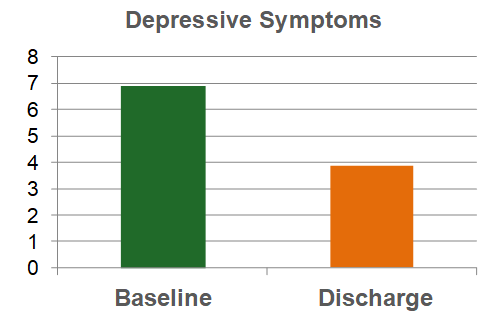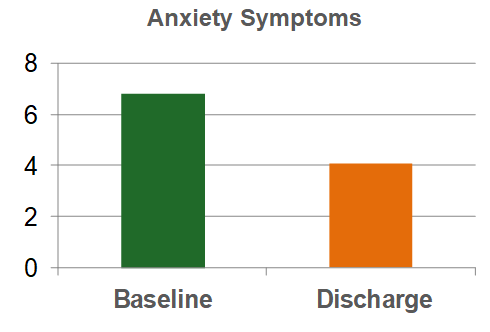Addiction Treatment Outcomes
Club Recovery’s Intensive Outpatient programming takes a holistic approach to chemical dependency treatment, guiding clients to examine the effects of addiction and recovery on all aspects of a person. In 2018 and 2019, we tracked the experience of more than 100 clients following the completion of their treatment.
99% of clients who completed our program would recommend Club Recovery to a friend or family member.
Positive Experience in Therapy Groups
At Club Recovery, the majority of clients reported enjoying their therapy groups and feel physically and emotionally safe while in group. In a survey completed at discharge,
100% of clients rated their group counselor with a 5 or a 6 out of 6, with 6 indicating “outstanding”.
100% of clients felt supported and understood by their group counselor¹.
100% of clients reported feeling comfortable in their group despite group members’ differences¹.
100% of clients felt involved in establishing their unique plan for treatment¹.
¹ These questions were measured on a scale of 0 to 6 with 5 or 6 indicating strong agreement with the statement and 0 indicating complete disagreement with the statement.
Improvements in Quality of Life and Coping Skills
The quality of life data was compiled using the World Health Organization Quality of Life (WHOQOL). From onset of treatment to discharge, clients reported significant improvement in their quality of life (p<.001, eta squared= .23, large effect).
Additionally,



Improvements in Mental Health Symptoms
Clients at discharge also reported significant reductions in their depressive and anxiety symptoms. To measure depression, we used the Patient Health Questionnaire-9 (PHQ-9). The PHQ-9 is a common clinical measure utilized to assess the primary symptoms of major depressive disorder. To measure anxiety, we utilized the Generalized Anxiety Disorder-7 (GAD-7). The GAD-7 measures the core symptoms of generalized anxiety disorder. These measures were given to clients at the beginning of treatment and when they discharged.
From baseline to discharge, depressive symptoms decreased:

A higher score indicates higher depressive symptoms. The average score was 6.91 at baseline, and dropped to 3.87 at discharge. Using paired-samples t-tests, these differences are statistically significant (p<.001, eta squared= .30, large effect).
From baseline to discharge, anxiety symptoms also decreased:

A higher score indicates higher anxiety symptoms. The average score was 6.81 at baseline, and dropped to 4.10 at discharge. Using paired-samples t-tests, these differences are statistically significant (p<.001, eta squared= .24, large effect).
Contact Club Recovery for your assessment today
Call (952) 926-2526 to learn more or to schedule a professional chemical dependency assessment. As a leading alcohol abuse and addiction treatment center serving the Twin Cities area, we will provide information and insight to help you begin your journey to recovery.
Club Recovery is located at 7701 York Ave S #350, Edina, MN 55435
